
Issue #: 169
Published: January / February 2020
- Price per issue - digital : 6.50€Digital magazine
- Price per issue - print : 8.50€Print magazine
- Access to Multihulls World digital archives Digital archives
Roaming is an inescapable fact of life for lots of artists. Tours for musicians and dancers, exhibitions for painters and photographers… So why not travel on the water? This is the idea of Honky Tonk Sail. Sailor and artist, Soizic works on a Punch 12.50, on which she has installed her painting studio. Thanks to this catamaran, along with Bots (the skipper), the couple have been able to organize jazz music tours over the last two years. They sail around the Caribbean (the subject of this first part) and the North Atlantic.
Punch 12,50 Honky Tonk
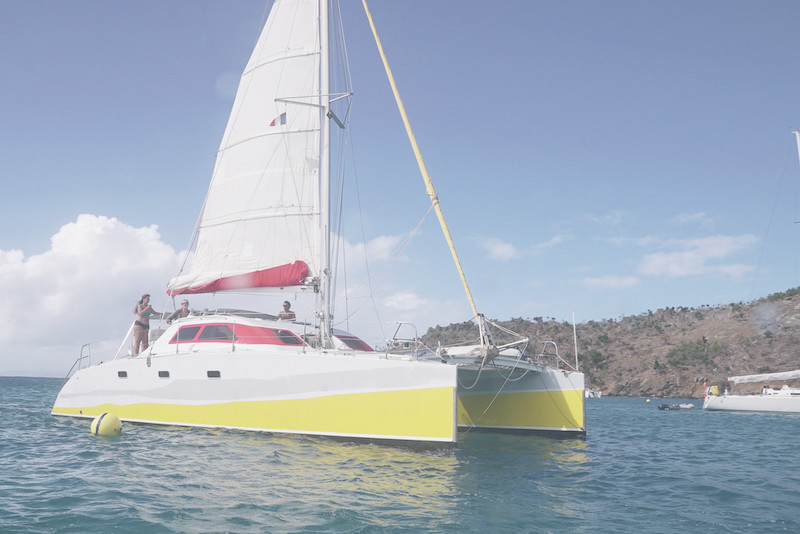
“Why Honky Tonk? Well, it’s the name that was given to piano bars in the 1930s. These were the places where diverse styles of music such as country, rock’n’roll, boogie-woogie and ragtime started to become popular. The Honky Tonks were the places to go and let your hair down: music, dancing but also prostitution and alcohol. The alcohol-fueled nightlife often meant that the pianos ended up out of tune or missing keys. When we talk about Honky Tonk today, it evokes a certain kind of keyboard sound and style. Giving the catamaran this name highlights the particularity that it shares with those old bars: it’s a meeting place, and somewhere that music has a staring role. It’s kind of the place where it’s all happening…
Before, this catamaran was called Ti Jon, which means “little yellow one” in creole. It was part of a fleet of four Punch that belonged to the Martinique UCPA, and which were all named based upon their color (Little Blue, Little Yellow, etc).”
TECHNICAL SPECIFICATIONS
Builder: Multicap Caraïbes
Architects: Mortain Mavrikios
Length: 12.00 m / 39’4”
Beam: 6.40 m / 21’
Mainsail: 53 m² / 570 sq ft
Genoa: 33 m² / 355 sq ft
Spi: 110 m² / 1,185 sq ft
Engines: 2 x 21 hp
Construction: Plywood epoxy
Cookie: A dinghy that’ll keep you dry!
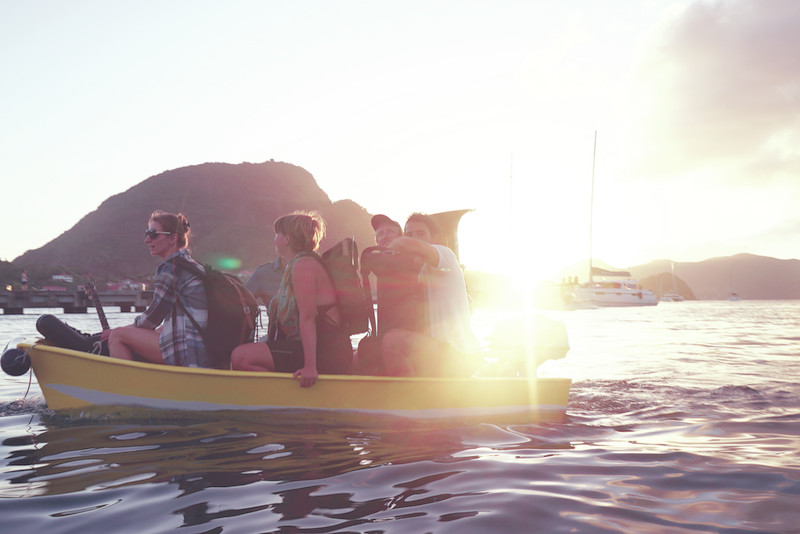
Inspired by Honky Tonk’s plywood-epoxy construction, Bots decided to build a dinghy using the hull of a RIB as a base and then creating the rest. In between the rain showers in Guadeloupe, the vessel managed to dry out. After two weeks, the new dinghy, christened Cookie, was operational and able to provide a drier trip from ship to shore than the inflatable dinghy could.
Everyone loves New Orleans jazz
As the captain is a trumpet and tuba-playing New Orleans jazz fanatic, it’s unsurprising that the tours tend to have that old-world, colorful theme. So, the musicians that come aboard all belong to the family that plays old 1920s and 30s jazz. This shared passion means that they are able to learn to play together very quickly, and stage concerts without really knowing each other. These musicians share a repertoire, despite their different nationalities or the fact that the music was created 100 years ago in America.
Most of the musicians that embark on Honky Tonk don’t have any experience of sailing or the maritime world in general. It’s the desire to have an adventure and set out into the unknown which incites them to join the stage-catamaran. From then on, it’s up to us, the sailors, to be good teachers and pass on the sailing basics to the artists.
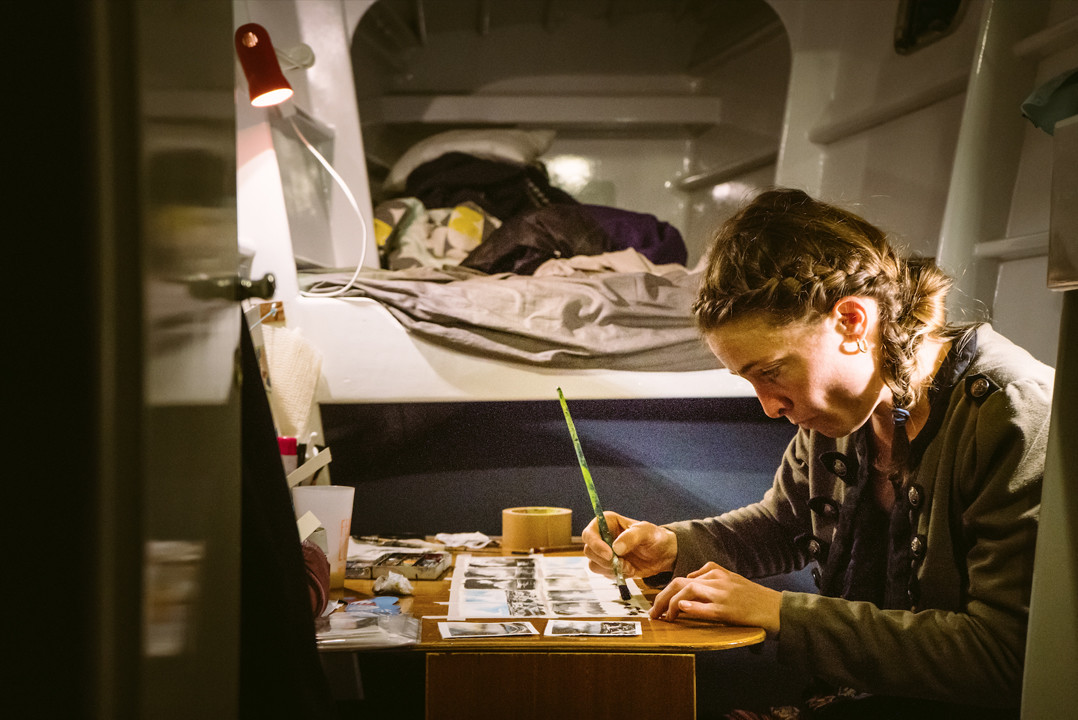
An itinerant group of sailing musicians
Project coordinators: Bots and myself, both sailors and musicians. You will have realized that Bots is a musician. Hardened traveler who started out with four years spent cycling around Europe and Asia, it was during this time that he learned about music and street theater, especially when working with Cyclown Circus. He then got the urge to sail, and despite not really having any sailing knowledge, Bots dreamed of having a yacht. Before owning his Punch 12.50, he lived on an 11m polyester craft that he sailed between Greece and the Canaries, passing by Belgium and the Azores. After six years of concerts and hoisting sails, he decided to take a big step, launching the Honky Tonk Sail Project, with the idea to taking on a larger crew. It was then that he discovered the world of the multihull concept. The space and comfort of a catamaran opened up new possibilities for an itinerant sailing music band.
As for myself, I’m an illustrator and painter. Before joining up with Honky Tonk, I participated in and organized several artistic-maritime projects: the Armada 2013 which got together 12 yachts and 70 musicians for a two and a half month cruise between Corsica and Sardinia; then the Festina Lente in 2016 where thirty artists and sailors set out on an eighteen month tour around the Mediterranean and the North Atlantic. The pair of us have definitely caught the nomadic bug, with a thirst for freedom.
My studio is housed in the port hull. I generally work on smaller formats (unsurprisingly being on a boat) to produce watercolors and also work with Indian ink.
Whether she’s being used as a studio or as a stage, Honky Tonk is a catamaran which offers another lifestyle and mean of transportation for musicians, but also a different outlook on sailing for sailors.
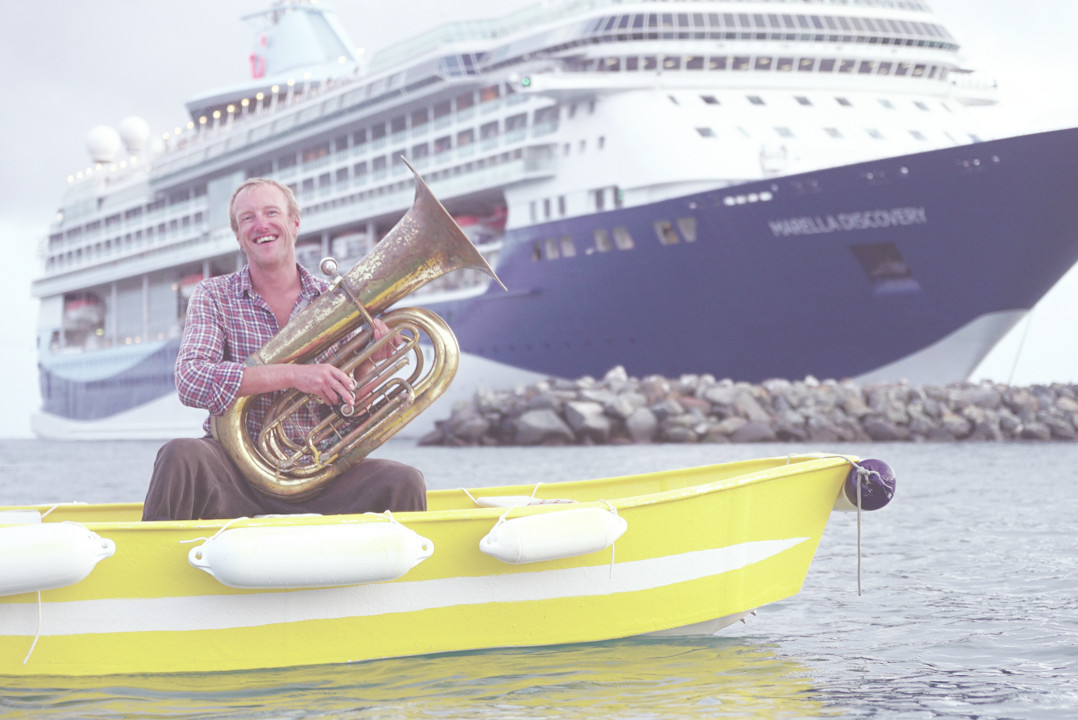
Old jazz in the West Indies.
If the West Indies and Old Jazz were having a conversation, they would surely have a few subjects in common, most notably the one about black people being dominated by white people. These islands, influenced first by colonization and then slavery, are a kind of European territory on the other side of the ocean. The context could only help the jazzmen play their blues, ragtime or stomps with real heart and soul. Quentin Bardinet, one of the crew’s sailing musicians -who stayed on board for no less than 9 months- had already sailed in the West Indies. There was one rendez-vous that he really couldn’t miss: Biguine music. A tradition in the West Indies, it also began to develop in Guadeloupe and Martinique in the 1920s. Our few months spent in the Caribbean were rich in new, island melodies.
One month after having everything organized onboard, we picked up a group of musicians in Guadeloupe. One of Bot’s challenges is to find a balance in the group of musicians. What kind of concert could Honky Tonk give with four double bassists? Each group needed to have balanced rhythm and melodic sections. That winter there would be Russel on the trombone (USA), Laurin with her clarinet (Germany), Léonie on vocals and washboard (UK), Quentin on the banjo (France), Tom on the sax (Belgium), Bara on the clappers (Czech Republic) and Bots on his tuba (Belgium). Also on the team were Coline, our camerawoman, and me. I looked after the communication. Only Quentin, Coline, Bots and me, Soizic, were sailors. The others were to discover the magic of phosphorescent plankton or the moon rising from the trampoline, the stress of sail-handling in heavy weather, the joy of being followed by a pod of dolphins or a good bout of seasickness.
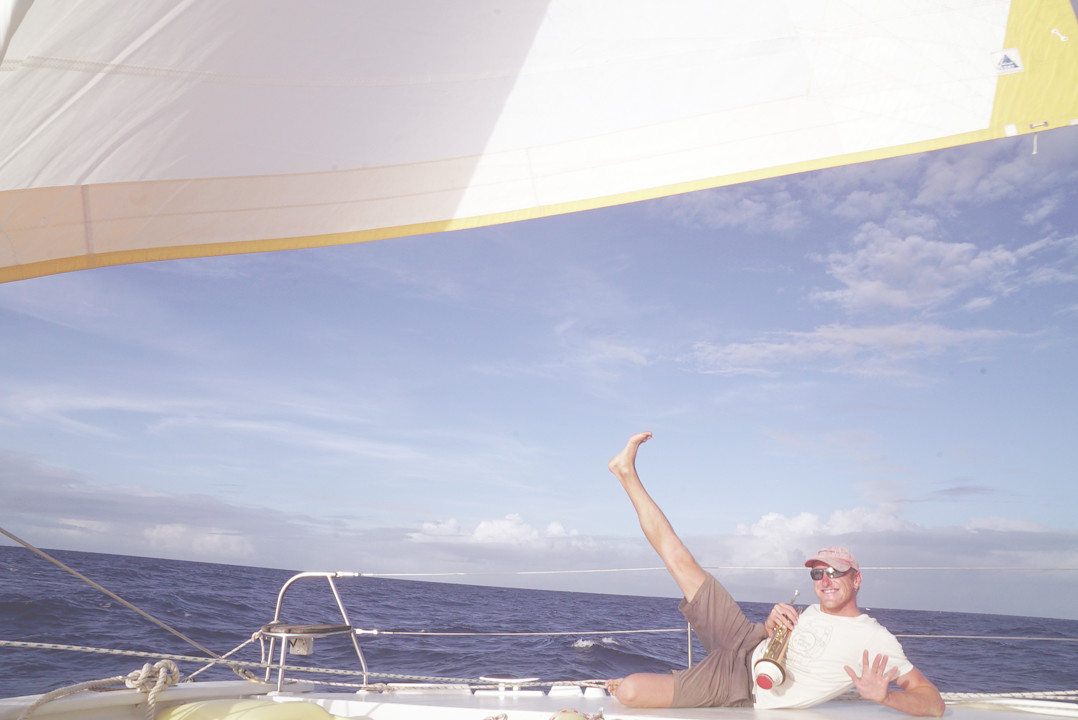
A winter spent at anchor
We spent our winter at anchor. Honky Tonk only ever went into port to fill up with fresh water. Concerts take place in the street or at beach bars. The dinghy shuttles everyone backwards and forwards. Oars for the newbies, and with the outboard for the dinghy-skippers-to-be. Christmas and New Year are obviously good times for music, but the jazz band also finds itself providing the accompaniment at weddings, aperitifs or even markets. Sometimes the band just sets up and plays on the quayside or on village squares, jetties or under straw huts on the beach. Usually the music creates a bond between the locals and the musicians who are soon recognized and get invited back.
Quentin already knows some of the islands and is in charge of getting the gigs. He has already played here and shared his precious address book with us.
We play hard. For a pizza, for money or even a bottle of rum, and we keep on playing! One thing’s for sure: it sounds good! We keep on playing and keep meeting more people.
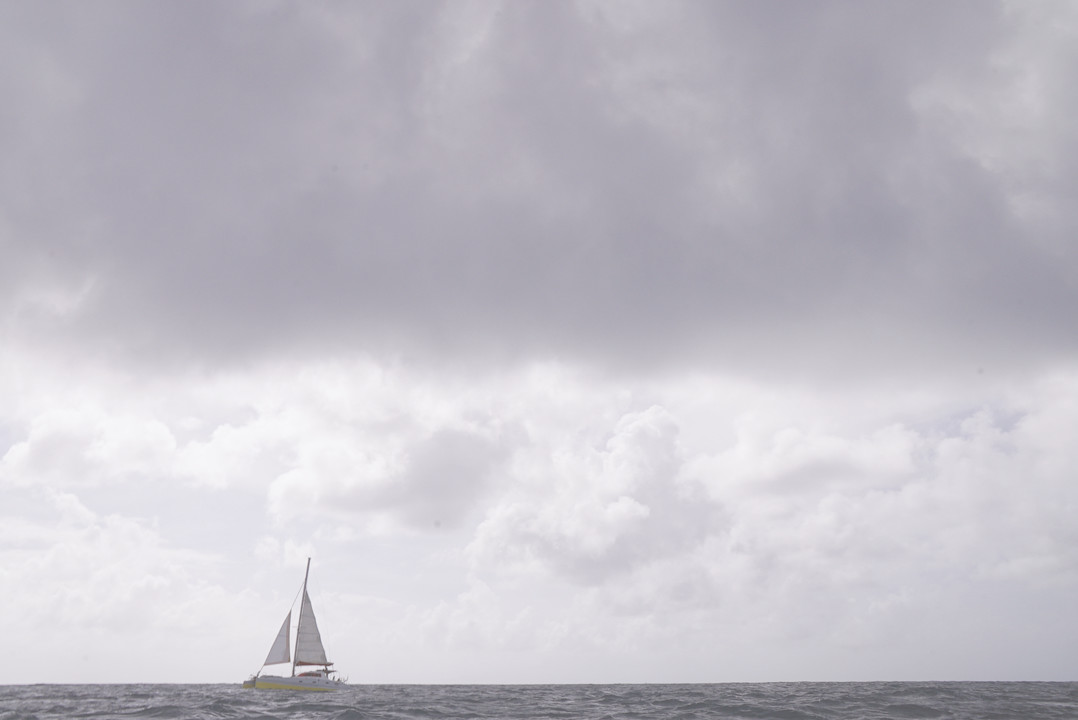
Living together is a challenge
Everyone gives their all, whether it’s musically, artistically and of course humanly, because we’re all aware that living together can present certain challenges. We have discussions to get an idea of everyone’s “temperature”. How’s it going? And you? It’s tough, it’s great, it’s challenging, it’s fantastic, it’s unique. Well it has to be something, and everyone expresses themselves differently, whether in music or in art. Quentin practices his banjo in his forward cabin whilst I depict the warm rain on the coconut palms in Indian ink.
This is still a test phase. Will musicians make the trip to play under these conditions? No salary, just like an amateur, with a thirst for adventure. Will the West Indian public take to our kind of music? Is the catamaran in good enough condition? Can ten artists live together on board for two months in close proximity without there being too much tension? The answer is yes, yes, and definitely yes! The first phase was encouraging: the catamaran was beginning an exciting adventure.
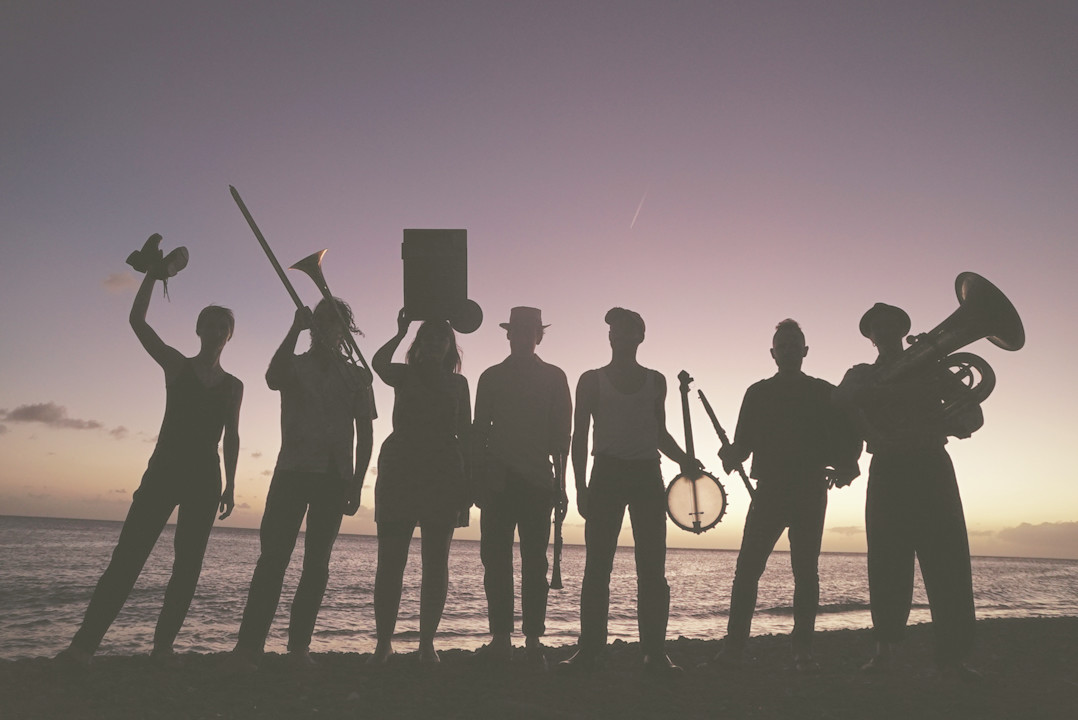
The angle grinder and sander are always close at hand…
The first part of our journey saw its fair share of epoxy and two-pack paint. Well it wouldn’t be a big departure if there weren’t a few repairs that needed doing, would it? Restoring the trampoline, changing the standing rigging, checking the fittings, repairing certain areas of the deck which had taken in water, and the genoa car track, building a new dinghy, changing the engine ventilation system and buying a new mainsail after ripping the old one… Sika, epoxy resin, fiber glass: the angle grinder and sander are always on hand. Bots felt that by buying a more recent boat (his monohull was from 1978 and Honky Tonk was launched in 2003) he would have less work to do. However, this doesn’t seem to be the case despite Honky Tonk only celebrating her 15th birthday this year. It must simply be the time that the boat has spent in the water which takes its toll on the wood and the fittings… not to mention the engines.
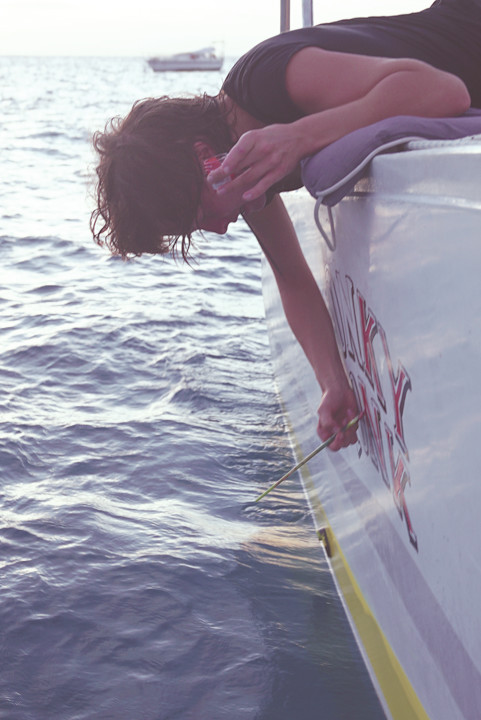
Learning to sail a multihull
The captain got to grips with sailing the catamaran. No one on board had ever dealt with sails on a catamaran before. It’s one big experiment that’s beginning! The debate begins on board with the crew, comparing and observing the sails on neighboring multihulls, analyzing the dynamics of how the mainsail fills and flattens out, understanding what reefing is all about and discovering the anemometer, which no one had ever used before. The crew is enthusiastic and ready to learn. The conditions are ideal: a steady 15 knot, warm east-south-easterly. It’s perfect for learning maneuvers in calm conditions, and also for getting used to reading the sky. Small squalls pass through regularly, which means that the crew have to concentrate on reefing and watching. Although the sea is calm, everyone soon realizes that they need to be alert, keeping an eye on their surroundings and the clouds as though it were a pan of boiling milk. Coline, the photographer captures the idyllic setting, and the photos are used for all our publicity and communication. All of the musicians who came on board will remember the wonderful Caribbean images. It would be difficult for them to imagine themselves in a big sailing jacket and gloves. Yet this is what they’ll need for their stay in Ireland or Normandy…! That however, is a story for another day…
The sunny West Indian weather means that we can spend so much time outdoors. All of the catamaran’s outside surfaces can be used, which certainly facilitates onboard life. The ten crew members split themselves between the cockpit, the saloon, the deck, the trampolines and the turquoise water… everyone feels a little more at ease when there’s plenty of space. Honky Tonk would have felt a lot more cramped in less clement latitudes. This was in fact the one and only time that the project welcomed so many artists, despite the fact that playing jazz with so many musicians was wonderful.
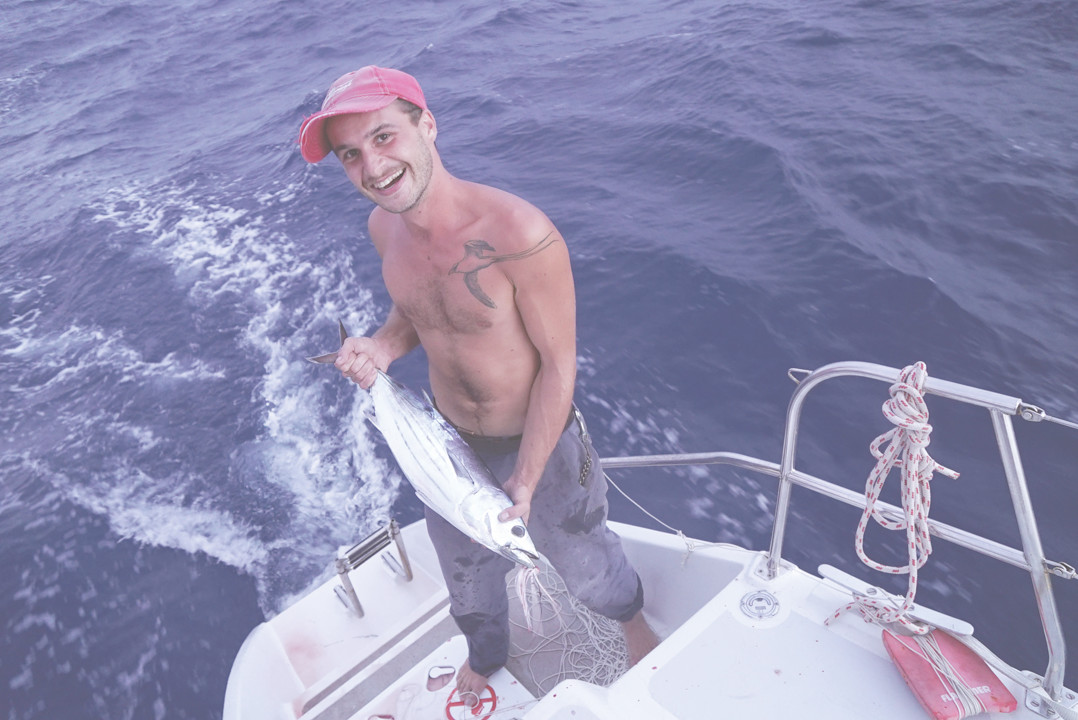
The dream of playing jazz in Louisiana
One of the crew’s dreams is of course to play Old Jazz in its own backyard. New Orleans wasn’t that far and could be reached in our cat. Right from the start this idea lodged itself in the captain’s head. However, it wouldn’t be all plain sailing for Honky Tonk: with the crew being international, visas would be required, and not just simple tourist visas either. The catamaran would also need to obey certain rules too. One of the ideas which appealed to the crew, was to get as far as the American Virgin Islands (which were close by) and to do the visa requests there. However, we got a reality check, and discovered that there was no chance of the boat and its magnificent musicians being allowed into the port of New Orleans. We considered leaving the catamaran in a local port and flying to Louisiana but ruled this out as the cost of the port was too high. So, Honky Tonk turned around and headed for Guadeloupe, where the welcome was warm, and a space in the port much more reasonably priced. The musicians took to the skies to spend a few weeks in the place that was home to their beloved music. For them, New Orleans was the Big One. The unique home of hot jazz. While we were there, there were some crew changes. Russel lived locally and Léonie wanted to spend some time in New Orleans. Honky Tonk was therefore looking for a new crew member for our transat. Coleman, a violinist, came aboard a month later.
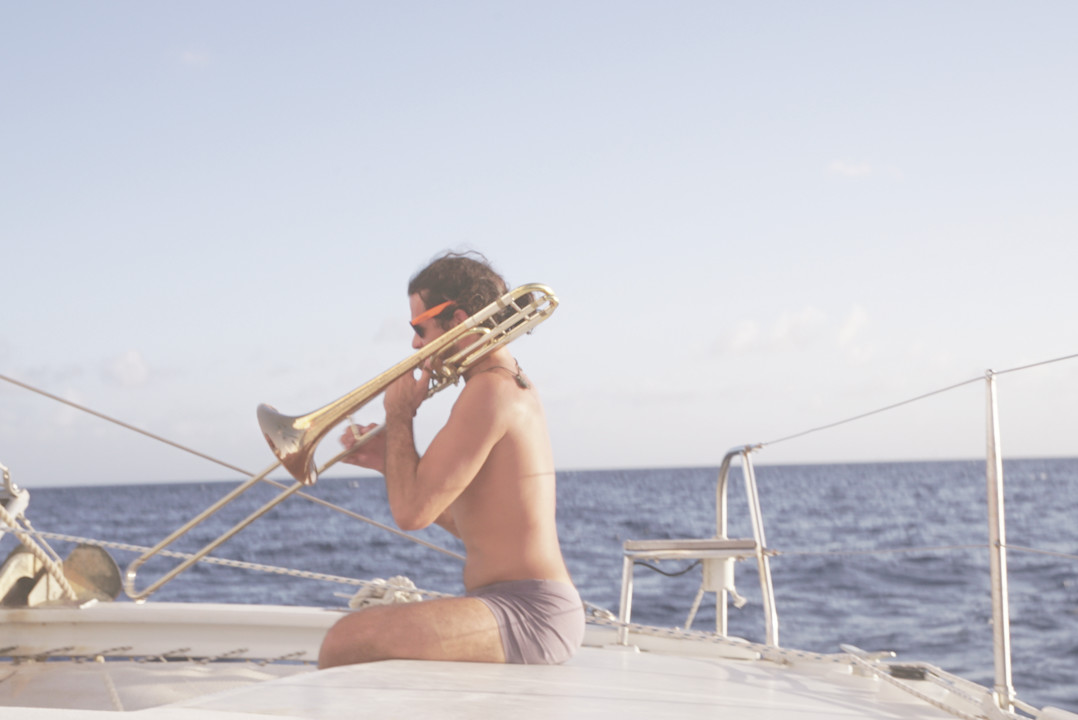
Preparing for the transat
After a month in New Orleans, and having had a bellyful of jazz, Quentin and Bots came back to the catamaran. A new chapter was about to begin: the Transat. Preparations began as we waited for Coleman and Leon, a friend of Bots who came from Munich.
Along her route, the catamaran crossed the track of the hurricane which had ripped through three months earlier. On some of the islands, such as St Barths, you would hardly know that there had been a cataclysm as the buildings had been renovated so quickly. In the British Virgin Islands, it was a different story. Great big blue tarpaulins covered the roofs of the houses and ripped up trees layed across the roads. The arrival in the port was unforgettable: masts were sticking out of the water, some straight some at an angle. The bellys of upturned hulls stared up at the sky. The apocalyptic surroundings and the traumatized inhabitants made a strong impression on all of us. The way that the destruction was managed was very different depending upon the financial resources that were freed up. Government or private, it was very different. There was a huge contrast between St Barths and the BVI.
Once again Nature had made us feel very humble. It was just another notch on the bedpost of life, and travelling is certainly one way to learn a lot quickly.
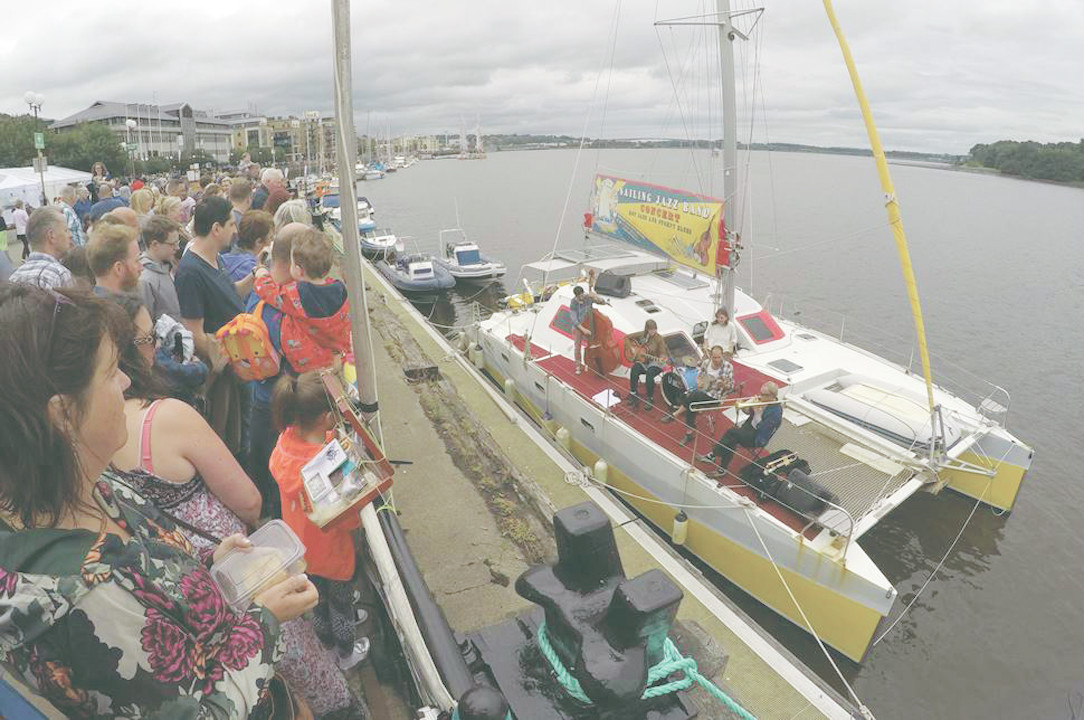
The balance between the sea and being an artist is quite interesting. Art can be a little self-absorbed, a private world centered around the artist and their work. The sea however, inspires humility. Massive and powerful, she will always put us over-confident humans back in our place. All sailors know this. A concert doesn’t sound the same when there are 48 hours-worth of sailing behind it. The public cannot be aware of what the artists have just been living, but they will feel the sincerity in the music. Even when not sailing, just the rhythm of being at anchor, (when even a -cold- shower is fleeting), sooths the crew and connects them to the islands.
There’s no doubt that after swimming with turtles, the singer will sing her heart out, and the painter will paint with their eyes wide open…
What readers think
Post a comment
No comments to show.